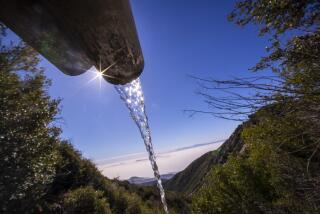LIFE IN THE DESERT
He is a state employee working in Sacramento, but with his checked shirt, faded khakis and battered Rockports, meteorologist Dave Reynolds could be an environmentalist from central casting. But in Plumas County, a group of people consider him an environmental despoiler. Because he would like to make it rain.
Reynolds has invented a ground-based rain-making system that injects passing clouds with tiny amounts of supercooled propane from 10-foot-tall aerosol sprayers. This condenses ice crystals in the clouds and, theoretically, increases the amount of
rainfall produced by each storm. Last fall, Reynolds set up 10 dispensers on a ridge above the Feather River Valley, north of Sacramento. It cost the state just under a million dollars. But if it works, the system can be expanded, and Reynolds could sit in Sacramento and, with a computer, make it rain all over the state.
Unfortunately, the U.S. Forest Service won’t let him turn on the dispensers.
“It’s the middle of a drought,” Reynolds fumes, “and these people are worried we’re going to make too much water.”
“These people” are a small group of Plumas County residents that claim the system will cause avalanches, flooding, erosion and muddy trout streams (many of these folks are fishers of trout). Last spring, they took their concerns to the forest service, which issued a restraining order on the rain-making equipment until certain amendments can be made to the Environmental Impact Report sometime by the end of the year.
Meanwhile, Reynolds sits in his office and writhes. He says the fears about long-term runoff changes aren’t valid; the mountains are still so dry right now, he says, that the flora and fauna could die.
“I go up to the weather center and watch the storms pass,” he says. “I know the dispensers will work.”
This year, he figures he could have caused five additional inches to fall on at least 120,000 acres, which would have brought the Sierra and the Feather River area up to a normal annual rainfall rate. Reynolds wonders if there are any streams, much less trout, left in the valleys.
“We could have done something,” he says. “We could have done a lot.”
More to Read
Sign up for Essential California
The most important California stories and recommendations in your inbox every morning.
You may occasionally receive promotional content from the Los Angeles Times.










